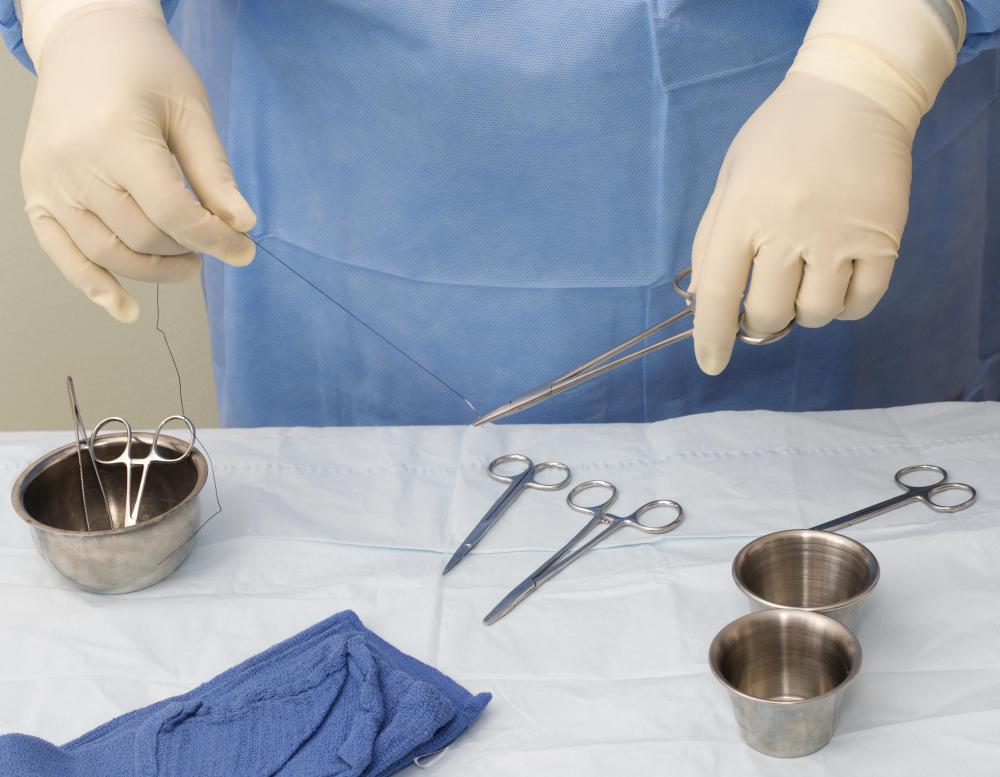At WiseGEEK, we're committed to delivering accurate, trustworthy information. Our expert-authored content is rigorously fact-checked and sourced from credible authorities. Discover how we uphold the highest standards in providing you with reliable knowledge.
How Do I Care for a Bleeding Incision?
A mildly bleeding incision may be treated by applying pressure to the area, but if the bleeding continues, the patient will likely need to go to the hospital for further treatment. Following surgery, the doctor will instruct each patient on proper care of the incision — these instructions should be carefully followed.
A profusely bleeding incision will require immediate medical attention. If the incision is not bleeding severely, the doctor will likely advise the patient to apply pressure. Otherwise, the patient should hold a piece of sterile gauze to the incision and apply pressure for a minimum of five minutes. They may then lift the gauze to check the bleeding. If it has not stopped, additional pressure should be applied.

If the bleeding persists after pressure is applied, the patient should return to the hospital. Infrequently, wound dehiscence may occur, which is the reopening of a surgical incision. If this is the cause of the bleeding, the doctor may need to suture the incision again — patients who do not receive additional sutures will need to monitor the bleeding incision carefully and change the dressing as often as needed.

The patient should always wash his hands well with an alcohol-based cleanser before and after changing the dressing on a bleeding incision. After loosening the medical tape around the dressing, he should then gently pull off the bandage and discard it in a plastic bag.
Saline solution or soapy water may be used to cleanse the area. If the skin has crusted blood and drainage on it, a sterile gauze bandage should be dipped in saline solution and used to gently wipe the skin. Another clean cloth should be used to pat the skin dry. Patients should only apply an antibiotic ointment or other medication to the incision under the direction of their doctor. A new dressing can then be placed over the incision.

Once the bleeding incision closes and begins to heal again, the patient should exercise caution to avoid reopening the wound. Activities should be limited during the recovery time, including avoiding heavy lifting, exercising, and, depending on where the incision is, frequent stair climbing and similar movements.
Incisions that have pulled apart and bled may take longer to heal. The incision area should be monitored closely as it heals, and the patient should contact his doctor immediately if he notices foul-smelling discharge or worsening discharge. Signs of a possible infection can include a fever and an incision area that becomes increasingly red, swollen, and painful.
AS FEATURED ON:
AS FEATURED ON:


















Discuss this Article
Post your comments